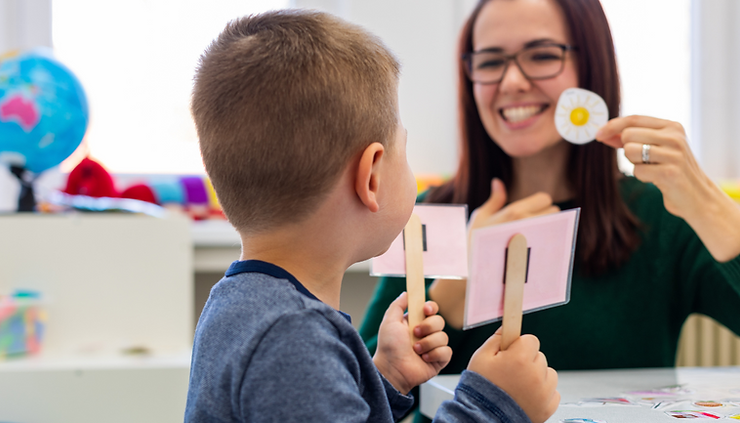As a parent, you want your child to communicate effectively and confidently. However, some children may struggle with speech sound disorders, which can affect their ability to speak clearly and be understood by others. In this blog post, we’ll explain what speech sound disorders are, how they’re diagnosed, and what parents can do to help their child improve their speech.
What are speech sound disorders?
Speech sound disorders are a type of communication disorder that affects a child’s ability to articulate sounds and speak clearly. These disorders may involve difficulties with producing specific sounds, using sounds in the correct order, or using the correct sounds in the correct context. Some common speech sound disorders include:
- Articulation disorders: difficulties with producing specific sounds, such as “r” or “s.”
- Phonological disorders: difficulties with using sounds in the correct order, such as saying “pasghetti” instead of “spaghetti.”
- Childhood apraxia of speech: a motor speech disorder that affects the ability to plan and coordinate the movements needed for speech.
What causes speech sound disorders?
There is no one specific cause of speech sound disorders. They may be caused by a combination of factors, including:
- Developmental delays: some children may develop speech sound disorders as a result of delayed speech and language development.
- Hearing loss: if a child has difficulty hearing, they may struggle to produce or distinguish certain sounds.
- Structural issues: some children may have physical abnormalities in their mouth or throat that make it difficult to produce certain sounds.
- Neurological disorders: some children may have neurological disorders that affect their ability to plan and coordinate the movements needed for speech.

How are speech sound disorders diagnosed?
Speech sound disorders are typically diagnosed by a speech-language pathologist (SLP). During an evaluation, the SLP will assess the child’s ability to produce specific sounds and use them in the correct context. They may also assess the child’s speech rate, fluency, and voice quality. In some cases, the SLP may recommend further testing, such as a hearing test or a referral to a medical specialist.
What can parents do to help their child?
If your child has been diagnosed with a speech sound disorder, there are several things you can do to help:
- Seek treatment: Speech therapy is the most effective treatment for speech sound disorders. Your child’s SLP can work with them to improve their speech and help them communicate more effectively.
- Practice at home: Your child’s SLP may provide exercises or activities for you to do at home to reinforce what they’re learning in therapy. Make sure to follow their recommendations and practice consistently.
- Encourage communication: Encourage your child to communicate as much as possible, even if they struggle with certain sounds. Praise their efforts and provide positive feedback to help build their confidence.
- Be patient: Improving speech takes time and practice. Be patient with your child and celebrate their progress, no matter how small.
In conclusion, speech sound disorders can be challenging for both children and parents, but with the right support and treatment, children can improve their speech and communicate more effectively. If you’re concerned about your child’s speech, don’t hesitate to speak with a speech-language pathologist or your child’s pediatrician for guidance and support.
Jessica Hundley, M.S. CCC-SLP, CLC
References:
- American Speech-Language-Hearing Association. (n.d.). Speech Sound Disorders: Articulation and Phonology. Retrieved from https://www.asha.org/public/speech/disorders/speech-sound-disorders/
- McLeod, S. (2013). Speech Sound Disorders: Basic Information for Parents. Retrieved from https://www.speech-language-therapy.com/index.php?option=com_content&view=article&id=26&Itemid=110
- National Institute on Deafness and Other Communication Disorders. (2021). Speech Sound Disorders. Retrieved from https://www.nidcd.nih.gov/health/speech-sound-disorders
- Webster, R. (2018). Childhood Apraxia of Speech: A Comprehensive Guide for Parents and Speech-Language Pathologists. San Diego, CA: Plural Publishing.
- American Speech-Language-Hearing Association. (n.d.). Speech Sound Disorders: Assessment and Treatment. Retrieved from https://www.asha.org/public/speech/disorders/speech-sound-disorders-assessment-treatment/
- American Speech-Language-Hearing Association. (n.d.). What Parents Should Know About Speech and Language Development. Retrieved from https://www.asha.org/public/speech/development/parent-stages/
- McLeod, S. (2015). 10 Strategies for Helping Children with Speech and Language Disorders. Retrieved from https://www.speech-language-therapy.com/index.php?option=com_content&view=article&id=15&Itemid=119



